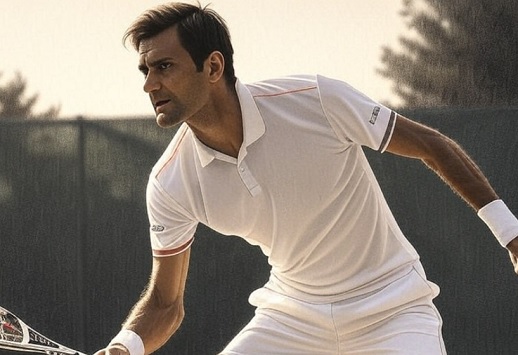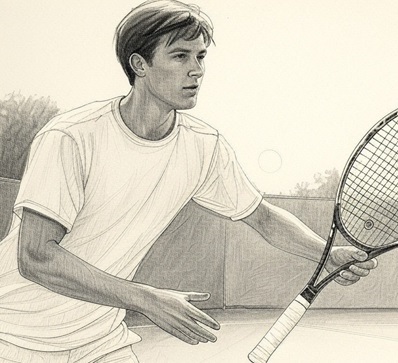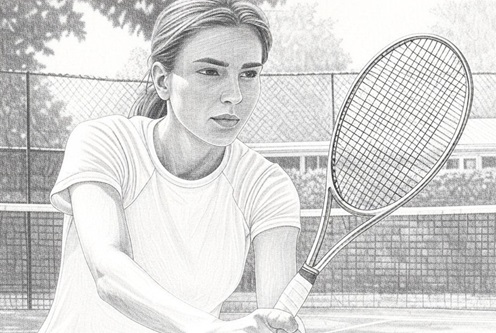Les clubs de tennis de Berne

Dans la ville historique de Berne, nichée entre les collines verdoyantes et les eaux de l’Aar, le tennis trouve son écho dans le rythme de la vie urbaine. Ici, les courts deviennent des tapis verts où se tissent les liens de la communauté, de la compétition à la détente, offrant une palette variée de clubs où chaque coup résonne avec l’histoire et la culture locale. Berne compte plusieurs clubs de tennis, chacun avec ses propres caractéristiques et charmes, totalisant une vingtaine de courts pour satisfaire les passionnés de ce sport.
Tennis Sporting Club Bern
Le Tennis Sporting Club Bern, établi depuis 1923, est un établissement vénérable situé dans le quartier de Kirchenfeld à Berne. Ce club a su préserver son héritage tout en s’adaptant aux évolutions du tennis moderne, offrant un cadre idyllique où se mêlent architecture historique et installations sportives de qualité. Avec ses huit courts en terre battue, il attire des joueurs de tous niveaux, des débutants aux compétiteurs aguerris, et est connu pour son ambiance chaleureuse et sa communauté dynamique.
Adresse: Kirchenfeldstrasse 70, 3005 Bern
Nombre de courts: 8
Surface: Terre battue
Éducation et Jeunesse: L’école de tennis du TSC Bern est réputée pour ses méthodes d’enseignement innovantes et adaptées, visant à former la prochaine génération de joueurs. Les programmes de jeunesse comprennent des cours réguliers, des stages intensifs pendant les vacances scolaires et des compétitions pour les jeunes joueurs.
Compétitions et Tournois: Le club organise plusieurs tournois de prestige, dont le célèbre Kirchenfeld Cup, qui attire des joueurs non seulement de Berne mais aussi des régions avoisinantes. Ces événements sont des moments clés où la communauté se rassemble, renforçant les liens sociaux autour du sport.
Événements Sociaux: Au-delà du tennis, le TSC Bern est un centre de vie sociale avec des soirées à thème, des journées portes ouvertes et d’autres événements communautaires. Ces activités ajoutent une dimension conviviale au club, faisant de chaque membre un acteur de la vie tennistique et sociale de l’établissement.
Formation et Entraînement: Reconnaissant l’importance d’avoir des entraîneurs qualifiés, le club propose des sessions de formation pour les entraîneurs, assurant ainsi que l’enseignement du tennis au TSC Bern est de la plus haute qualité. Cette approche développementale permet également de rester à la pointe des nouvelles techniques et méthodologies d’entraînement.
Lawn Tennis Club Bern
Le Lawn Tennis Club Bern, ou LTC Bern, est un club qui a su combiner tradition et modernité dans le paysage tennistique de Berne. Avec une histoire qui remonte à plusieurs décennies, il a récemment modernisé ses installations pour répondre aux besoins contemporains des joueurs, tout en conservant l’esprit de camaraderie qui a toujours été au cœur de son identité. La rénovation des courts en all-weather avec éclairage LED permet désormais de jouer dans des conditions optimales, quelle que soit la météo, élargissant ainsi les possibilités de pratique et de compétition.
Adresse: Dahlienweg 16e, 3422 Kirchberg
Nombre de courts: 6
Surface: All-weather (Swiss Court)
Le développement du LTC Bern se manifeste à travers plusieurs axes. D’abord, l’accent est mis sur l’éducation et la formation des jeunes joueurs, avec des stages intensifs pendant les vacances scolaires qui attirent des participants de toute la région. Ensuite, le club a développé une série de tournois annuels et participe activement aux interclubs, offrant ainsi des opportunités de compétition à tous les niveaux. La collaboration avec des écoles locales pour promouvoir le tennis parmi les jeunes est également un point fort de sa stratégie de développement.
Enfin, LTC Bern est devenu un lieu de vie sociale avec son restaurant, qui non seulement sert les membres mais aussi la communauté environnante. Des événements comme des soirées à thème, des journées portes ouvertes et des sessions de formation pour les entraîneurs enrichissent la vie du club, faisant du LTC Bern non seulement un centre de tennis mais un point de ralliement pour les passionnés de ce sport et au-delà.
TC Wander
Le TC Wander est un club de tennis qui incarne l’esprit de la convivialité et du jeu dans une atmosphère familiale à Bern/Köniz. Bien qu’il soit plus modeste en taille par rapport à certains autres clubs de la région, son charme réside dans sa capacité à créer un environnement où le plaisir de jouer au tennis prime, tout en encourageant l’esprit compétitif dans une ambiance détendue. Ce club est un lieu où les relations se tissent autour de la passion commune pour le tennis, offrant un espace où les joueurs de tous niveaux peuvent se retrouver et progresser.
Ces clubs de tennis à Berne offrent non seulement des espaces pour pratiquer ce sport mais aussi des lieux de rassemblement où se forgent des amitiés et des moments inoubliables. Que ce soit pour les compétiteurs de haut niveau ou pour ceux qui jouent pour le plaisir, chaque club à Berne contribue à la richissime tapisserie du tennis dans cette ville.





